The Queen's Particle Astrophysics group has the following technical resources
and personnel which are available to the subatomic physics community in Canada
via the NSERC Major Resources Support Grant (MRS) program.
Questions about the Queen's resources should be directed to Tony Noble
(potato@snolab.ca). Requests for allocation
of these resources should be made through the MRS resource request form,
and will be considered and prioritized by a common board that meets
at least quarterly.
Personnel
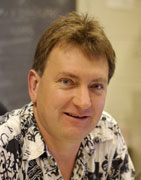
Rob Gagnon
Mechanical design and fabrication, operation of
low background counting facility
Rob joined the SNOLAB Group in April 2007 as a Mechanical Engineer technologist
after working in the metal design/fabrication and the construction sectors
of industry. He helps to design, build and maintain experiments and equipment
apparatus for SNOLAB related projects. Rob also maintains the clean rooms and equipment
within these areas which includes a radon emanation counting chamber, and he
operates the low background counting facility.
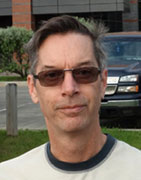
Phil Harvey
Programming C++, Perl, HTML, JavaScript, hardware interfacing and graphics display
Phil has a B.Sc.E. and an M.Sc.E. in Engineering Physics from Queen's, and works
as a programmer. He has more than 30 years experience programming data acquisition
and display software on various platforms. His past and current projects include
modeling of ferromagnetic hysteresis, data acquisition for a positron annihilation
experiment, simulation and 3-D display for medical positron emission tomography,
data acquisition and real-time display for sonar imaging systems, control and
tracking systems for the SNO+ phototube assembly and testing, data acquisition and
event display for the SNO and SNO+ detectors, automated data processing system for
SNO analysis, control systems for the SNO calibration sources and DEAP resurfacer,
event display and seismic modeling for DEAP, and web pages and CGI utilities for
SNO, DEAP and the Queen's Particle Astrophysics group, including the page you are
reading now.
Facilities
Counting Stations
We have several counting stations, which are used to measure radioactivity
from various materials. Since we are typically worried about natural
radioactivity leaking into our apparatus, we spend a lot of time counting radon
and radon daughters. We also look at alpha-beta coincidences and gamma
rays. The acrylic radon-emanation chambers at Queen's measure 30 cm diameter
by 65 cm long and have a volume of 42.2 L. The total efficiency for the Rn
emanation system is 36±5%, with a background of about 50 counts per day.
Clean Rooms
We have two clean rooms, which are necessary to prevent contamination of
equipment by dust. Dust is somewhat radioactive, and often contains uranium and
thorium at about the part per million level. When we built the
SNO detector, we were allowed less
than 1 gram of dust, contained in all the nooks and crannies in our detector.
Our clean rooms allow us to fabricate materials for deployment in
SNOLAB.
Metal Shops
We have two machine shops. There is a staff/student shop which is accessible
to all who have taken our introductory shop course, and a full shop with two
machinists to make things professionally. The shops include a CNC mill,
conventional mills, lathes, saws, grinders, and other machine tools.
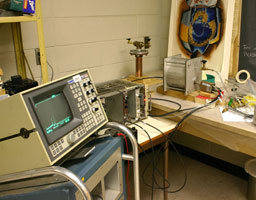
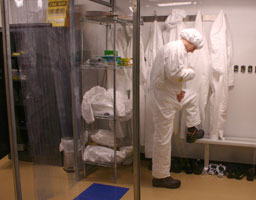
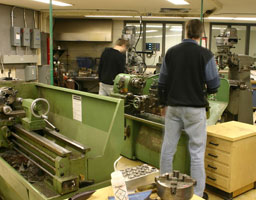
Prioritization board
The following people will review requests to access the resources of the MRS
facilities:
- Kevin Graham (Carleton) [ex-officio]
- Mark Boulay (Carleton)
- Randall Sobie (U Vic) [ex-officio]
- Tom Mattison (UBC) [chair]
- Brigitte Vachon (McGill)
- Tony Noble (Queens) [ex-officio]
- Blair Jamieson (Winnipeg) [secretary]
- Akira Konaka (TRIUMF)
- Michael Roney (IPP)
If you have questions or comments about the content of this website, please contact
qusno@sno.phy.queensu.ca.